WRITER: Nicolas Shammas
There are very few luxury brands that ever attain a widely acknowledged level of supremacy but, if you ask anyone who’s well versed in the field of superyachts, who they’d rate as the best constructor of all, you’ll get one resounding answer: Feadship.
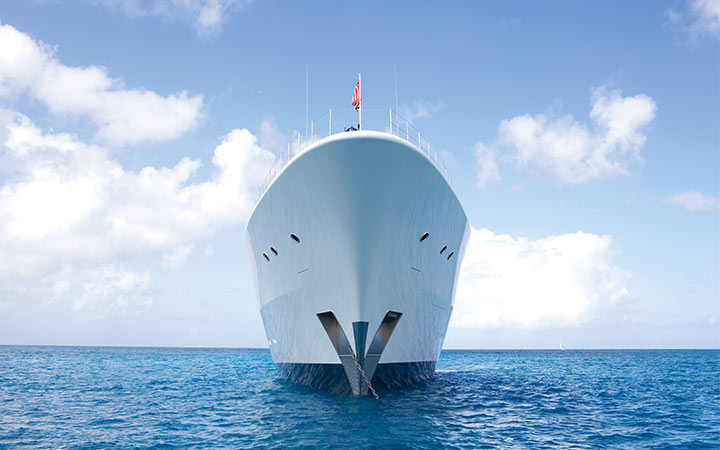
Size matters. Or rather, it does in the rarefied world of superyachts. There’s an issue published once a year by Boat International, listing the top 200 largest yachts and the effect of this annual guide is that owners now design their new builds with these rankings in mind.
To put things in perspective, let’s take H.R.H. Prince Alwaleed bin Talal’s 86-metre boat as an example. Before he named her Kingdom 5KR, she was the Trump Princess (owned by Donald Trump) and before that she was called Nabila (and owned by Adnan Khashoggi). At that time – we’re talking early 1980s – she was the world’s largest yacht. Take a look at her rank today and you’ll find she has been – excuse the pun – trumped by 56 larger boats.
In just the past two decades, the average superyacht has more than doubled in size and there’s seemingly no end in sight. Case in point, we may all have been stunned by Azzam when she debuted two years ago – she is after all a chart-topping 180-metre Lürssen belonging to the President of the United Arab Emirates, Sheikh Khalifa bin Zayed Al Nahyan – but this past February we were informed of Triple Deuce, a megayacht that goes a whopping 40 metres further to reach 222 metres in length. She’ll cost over 1 billion USD to make (which is a massive sum by any standards but even more so when you consider it represents more than the annual GDP of the Seychelles and Gibraltar) and then there are her annual operating expenses, which I imagine, could easily surpass the 30 million USD mark.
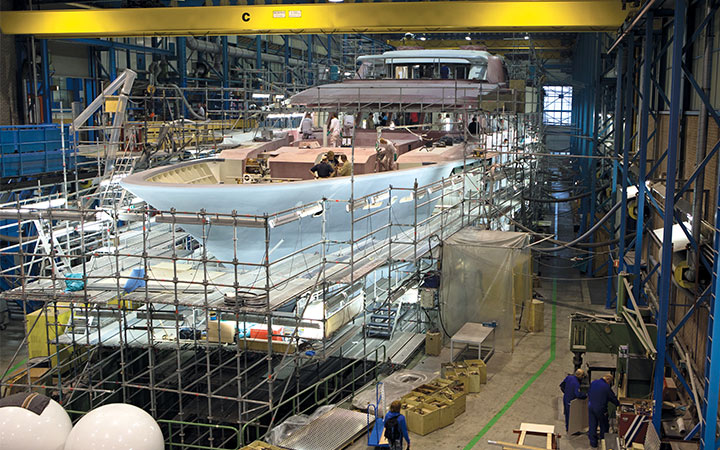
Project 809 under construction.
Oddly enough, Feadship, which is often referred to as the Rolls-Royce of the Seas, doesn’t overly concern itself with these matters as they believe that there’s a limit to this game of one-upmanship. “The notion that bigger is better is simply not true,” says Jan-Bart Verkuyl, Director of Feadship, when we meet at Kaag Island, one of the company’s three shipyards across Holland. “We’re even seeing plenty of owners downsizing now because they just didn’t feel at home on a megayacht. After all, owners like to feel they’re on the water but after a certain point you’re just not going to feel that anymore. Having said that, the yacht market is still growing and I would say the 60 metres of five years ago has become the 80 metres of today.”
To date, the largest project Feadship has undertaken was 101 metres and it was completed at this very yard in January, under the name Project 808. Now named Symphony, it must have been an extraordinary sight to see her navigate the narrow Dutch canals – which even traverse motorways – on her journey to the open seas. “We have now broached the 100 metre mark and there’s an even larger order on the books but we will continue to take on projects in a manner in which we can control the quality and still say it’s a Feadship,” affirms Verkuyl. “Typically, we have a steady output of between four and six yachts a year. We could easily go with the flow and beef up the company by accepting more orders, and ever-larger orders, but when you go from an 80-metre build to a 140-metre one, you effectively need double the workforce. Given that many of our workers have worked with us for over 40 years and some are second, third, even fourth generation workers, it would be virtually impossible to spring up others like them so we would not be able to guarantee the same quality. And that would be detrimental.”
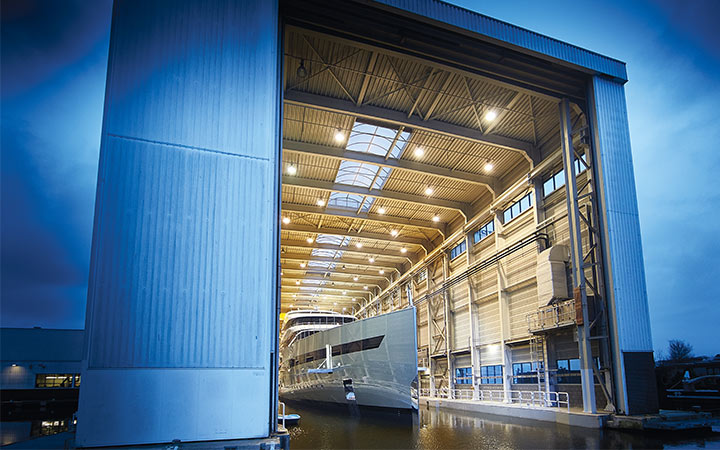
In January, Feadship launched the 83.50-metre Savannah, the first superyacht to feature an eco-friendly blend of a single diesel engine, three gensets, batteries, propeller, azimuting thruster and a streamlined hull shape.
With roots that can be traced back to 1849, the company has a firmly grounded culture, work ethic and legacy but it’s also built on a very unusual structure, or at least it has since 1949. That’s the year that this export association was formed. You see, the name Feadship is derived from First Export Association of Dutch Shipbuilders and its aim was to target the lucrative US market following the demise of the pleasure craft business in Europe after World War II. The main constituents of this alliance were two Dutch shipyards, Royal De Vries and Royal Van Lent, in addition to a yacht design firm, De Voogt Naval Architects. Today, 66 years later, two of the three families – De Vries and Van Lent – remain active in the business and together, they own three shipyards (one in Aalsmeer, another in Makkum and this one in Kaag) but are no longer focussed on just the US, rather the world at large. “Feadship is owned 50-50 by the Van Lent and De Vries families and the two equally own De Voogt Naval Architects. Though De Vries has two shipyards to Van Lent’s one, both companies ultimately own four slipways so it’s all very evenly divided,” says Verkuyl. “In 2008 LVMH acquired Royal Van Lent but they have demonstrated over the years that they value family companies and continuity. As such they strongly support the company, or the Maison, as they like to call it, and Van Lent remains on the board.”
The timing of my visit was fortuitous because I had the opportunity to tour the 66.25-metre Project 809, due to launch at the end of the year. Though obviously an impressive superyacht with some pretty cool design features like an open three-floor atrium linked by a winding staircase and massive glass windows, it is the palpable quality of workmanship that takes you by surprise the moment you step aboard. There’s no mess, clutter and barely even any noise – except for the sound of music. Feadship claims a ‘relentless pursuit of perfection in every aspect of design, construction and engineering’, but I also discovered a happy workforce, which operates in teams of mentors and apprentices so as to ensure their exceptional craftsmanship is passed down the generations. The division of labour, communication between individuals, and general scale of work reminded me of an army of ants building an intricate nest.
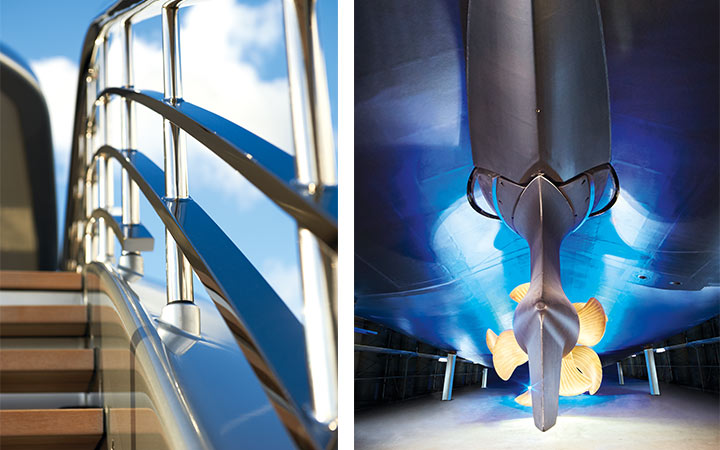
Right: A rare look underneath the eco-friendly Savannah.
Evidently, they’ve built up their reputation on the quality of this work, which is highly complex, given that every project is a one-off and made to satisfy the unique requirements of a given client. “Our yachts are unique but the process is the same: we start with a blank sheet of paper and we listen to the customers’ needs and desires, and our designers translate those into a tailor-made boat,” says Verkuyl. “What I have noted over these years is that no matter where our clients are from, there is a common thread in that eight out of ten of them are self-made entrepreneurs. They run very large businesses that they have created themselves so they like to create. I believe that’s why they are so involved in creating their yacht with us and why they love the process of it.”
Naturally, successful people know the importance of value and one of the most appealing aspects of owning a Feadship is that, unlike almost everything else on the sea, they’re renowned for holding their price and often even appreciate. “This is primarily because of our quality,” says Verkuyl. It might also be why every single Feadship ever built is still on the water today. It’s certainly an incredible claim to fame, especially when you consider that Rolls-Royce is often lauded for the fact that 65 per cent of their motorcars are still on the road.
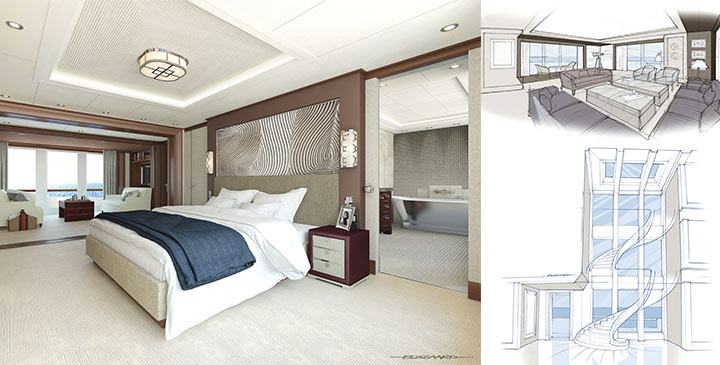
Every Feadship build is unique. In the case of Project 809, enormous effort went into creating a versatile interior. One example of this is the VIP stateroom, which can be split into two guest suites by way of concealed sliding wardrobes.
Yet, despite loving the experience of being allowed into this guarded world, I could not help but wonder if there was any difference between Feadship’s shipyards. “There’s no difference in terms of quality, “ Verkuyl assures me. “But some yacht owners have already built a yacht at one of our yards and therefore have a relationship with the people there, so they would of course be inclined to go back. More often than not however, the most important factor for our customers is having the first possible delivery slot.”
And from the moment you gain one of those coveted slots (delivery will be three to five years from then), you can begin the Feadship Experience – an investment in your own pleasure that will stay with you forever. “One of the beauties of building a Feadship is that you can trust the way we are going to build your yacht, it will be as solid as a rock. And there are no hidden agendas so we can be completely transparent. That’s why we put all our cards on the table. This way all the parties, whether the naval architect, the exterior designer, the interior designer, the captain or the owner’s representative, can look each other in the eye and say, how are we going to make this as best as it can be for the owner? By doing that, we create a fantastic atmosphere and a lot of fun for everyone. At the end of the day, we are in the leisure business so all the parties should be able to enjoy themselves and trust in the process, assured that the final result will be just as they all dreamt it would be.”